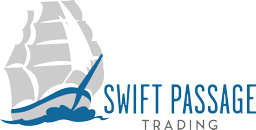
The second round of Transatlantic Trade and Investment Partnership (TTIP) negotiations between the United States and the European Union — what US Trade Representative Michael Froman has called the start of “real negotiations” — is scheduled to commence on October 7.
If successful, TTIP will be the biggest free trade agreement ever negotiated. Already, despite the economic troubles of recent years, the United States and European Union together still account for half of the world's GDP and roughly one-third of world trade. The potential gains from expanding trade between them could be enormous, representing a significant economic “stimulus” without the need for additional government spending. A German study projects that a “deep agreement” addressing a full spectrum of non-tariff barriers could yield a 13.4% boost in per capita real income for the United States, 5% for Europe, though other estimates are more modest. A study commissioned by the British Embassy in Washington and published this week sets out detailed job growth predictions for each of the fifty states. The US International Trade Commission was scheduled to publish an impact assessment this week, but the report has not yet appeared on the ITC’s website.
The objectives of the negotiations, set out by a joint High Level Working Group on Jobs & Growth, include:
- Eliminating/reducing tariffs and quotas
- Eliminating/reducing barriers to trade in goods & services and investment
- Enhancing compatibility of regulations and standards
- Eliminating/reducing/preventing “behind the border” non-tariff barriers
- Enhancing cooperation on global trading rules and concerns
For the most part, tariffs between the two sides are low already, although the EU does impose duties of 8% on motor vehicles (including parts) and 14.6% on processed foods. Outside those sectors, major gains will come from harmonization and/or mutual recognition of regulations, standards, and licensing. The cost savings to businesses from avoiding duplicate compliance efforts and the need to maintain parallel product lines will be considerable.
Although the ultimate public health and safety outcomes in the US and EU are broadly similar, American and European regulators are divided by profound philosophical differences. The precautionary principle embodied in the European regulatory approach is anathema to American business. TTIP is hardly likely to reconcile these differences at a stroke. Instead, a best-case outcome might entail the establishment of joint institutions and a procedural framework for advancing harmonization over a period of years. If the initiative succeeds, however, the sheer size of the transatlantic market will ensure that its harmonized rules, regulations and standards become the de facto standards for the world. Indeed, some observers see TTIP largely as an effort to counter China’s growing influence on the world economic stage.
Officials on both sides emphasize an ambitious 2014 target for completing the negotiations, hoping to head off public skepticism in light of the many political challenges to be overcome and the seeming failure of the multilateral Doha Round trade negotiations. Indeed, some are painting TTIP as a potential end-run around the multilateral WTO framework. Taking a cue from the EU's own history of ongoing enlargement, German officials have expressed a desire to open TTIP to third parties in the future as a means to set higher global standards. Each side's traditional trading partners will have plenty of motivation to sign up, as the Bertelsmann Stiftung/Ifo Institute study mentioned above calculates GDP losses between 2.5% and 9.5% to those countries from diversion of trade.
Reaching a comprehensive agreement will be far from easy. Recent revelations of NSA data gathering have raised hackles in Europe and will make it harder to negotiate access to EU markets for US tech companies. Other issues have been bones of contention between the two parties for decades. One of these, the audio-visual sector, has already been excluded from the European Commission's negotiating mandate at the insistence of France, which considers cultural heritage goods such as film sacrosanct. It is unclear just how firm the exclusion will be if push comes to shove; German media have presented it as more of a bargaining chip than a no-go zone. The United States for its part will be loth to give up "Buy American" public procurement policies, and it remains unclear how the fifty states could be induced to abandon their own buy-local policies. Meanwhile, environmental and consumer groups are already warning of a potential regulatory race to the bottom. It's a sure bet that corporate lobbyists will be pushing for a regulatory framework that is not merely harmonized, but also looser overall.
Both sides have taken steps to counter accusations of lack of transparency. The US has released the names of its lead negotiators and launched a series of small business roundtables, while the EU has published six of its ten initial position papers.
Political will to reach an agreement seems strong on both sides. The initial July round of negotiations focused on procedure and priorities and set up 24 working groups to address specific issues. These groups are currently preparing the October round of negotiations, to be followed by a third round in December. In January USTR From an will meet EU Commissioner for Trade Karel De Gucht for a “stock-taking exercise” to assess progress.

